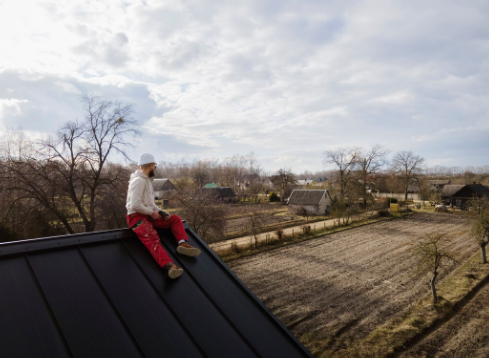Wedding Cakes: What Couples Should Know First

Understanding Wedding Cake Costs And Budgets
So, you’re planning a wedding and thinking about the cake. It’s a big part of the celebration, but let’s be real, it can also be a big chunk of your budget. Many couples are surprised when they first start looking into wedding cakes, expecting something that looks like it came straight from a magazine but costs a fraction of what professional bakers charge. It’s not quite like picking up a cake from the grocery store; these are custom creations, and that artistry comes with a price tag.
The Surprising Expense of Wedding Cakes
Wedding cakes are often one of the more expensive dessert options for a wedding, and it’s not just about the ingredients. Think about the skill involved: bakers spend years honing their craft, learning intricate decorating techniques, and understanding how to make flavors work together. Plus, there’s the time commitment. A complex cake can take days to design, bake, and assemble. When you’re looking at a professional wedding cake, you’re paying for that expertise, the quality ingredients, and the sheer amount of labor that goes into making your dream cake a reality. It’s easy to see a beautiful picture online and fall in love, but translating that vision into a delicious, structurally sound cake for potentially hundreds of guests is a serious undertaking.
Budgeting for Smaller Cakes and Dessert Tables
It’s becoming really popular for couples to opt for a smaller, decorative cake for the traditional cutting ceremony, and then supplement it with a dessert table. This can offer guests a variety of treats, from mini cupcakes to cookies and pastries. However, don’t assume a dessert table is automatically cheaper than a larger cake. Sometimes, the cost of providing a wide assortment of individual desserts can add up quickly, potentially exceeding the cost of a tiered cake designed to serve the same number of people. It’s worth getting quotes for both options to see what fits best within your budget and guest count.
- Smaller Cake + Dessert Table: Often chosen for variety and guest convenience.
- Cost Comparison: Get quotes for both a large tiered cake and a dessert table serving the same number of guests.
- Guest Experience: Dessert tables allow for grab-and-go options, which can be great for guests who want to mingle and dance.
Factors Influencing Wedding Cake Pricing
Several things can affect how much your wedding cake will cost. The complexity of the design is a big one; intricate sugar flowers, hand-painted details, or elaborate piping will cost more than a simple buttercream finish. The number of servings, of course, is a primary factor, usually calculated on a per-slice basis. The flavors and fillings you choose can also play a role, with premium ingredients sometimes costing a bit extra. Finally, the baker’s experience and reputation matter. A highly sought-after baker with years of experience will likely charge more than someone just starting out. It’s always a good idea to ask for general pricing information early in the process to avoid any surprises.
The price per slice is a standard way bakers price wedding cakes, but it includes much more than just the cake itself. It covers the baker’s time, their education and professional experience, the cost of high-quality ingredients, the effort involved in unique design execution, and the general costs of running their business.
Here’s a general idea of what influences the price:
- Design Complexity: Intricate details, sugar work, hand-painting, etc.
- Number of Servings: Typically priced per slice.
- Flavor & Filling Choices: Premium or specialty options may cost more.
- Baker’s Experience: Reputation and years in the industry.
- Delivery & Setup: Some bakers include this, others charge extra.
Designing Your Dream Wedding Cake
Your wedding cake is more than just a dessert; it’s a centerpiece that should reflect your unique style as a couple. Think of it as edible art that ties into the overall vibe of your big day. So, how do you go about creating this delicious masterpiece?
Inspiration From Your Wedding Details
Don’t feel like you have to start from scratch when it comes to cake design. Look around at the other elements of your wedding for inspiration. This could be anything from the intricate patterns on your wedding invitations to the color of the bridesmaid dresses, the flowers you’ve chosen, or even the style of your wedding gown. Bringing swatches of fabric, photos of your venue, or pictures of your floral arrangements to your cake designer can give them a fantastic starting point. They can then translate these details into edible elements on your cake, creating a cohesive look.
Collaborating on Cake Design
This is where the fun really begins! Your cake designer is a professional, but you and your partner are the ones who know your vision best. Be open about what you like and what you don’t. Most bakers will work with you during a consultation to sketch out ideas right then and there. It’s a collaborative process, so don’t be afraid to share your thoughts. Remember, it’s your cake, and it should make you both happy.
Exploring Unique Cake Flavors and Fillings
While classic flavors are always a hit, don’t shy away from exploring the vast world of cake flavors and fillings. Many couples today opt for different flavors for each tier, offering guests a variety of tastes. Consider a rich chocolate cake with a raspberry filling for one tier, and a light lemon cake with a lavender buttercream for another. Some popular combinations include:
- Chocolate Bourbon Cake: Paired with milk chocolate ganache and salted caramel buttercream.
- Lemon Cake: Filled with homemade lemon curd and fresh raspberries – great for cutting through richer meals.
- Vanilla Bean Cake: With strawberry compote and a vanilla bean buttercream.
- Red Velvet Cake: A classic, often paired with cream cheese frosting.
Don’t feel pressured to pick just one flavor. Offering a couple of different options across the tiers can be a wonderful way to cater to various palates and make your cake even more memorable for your guests. It’s also a fantastic way for you and your partner to incorporate flavors you both love, even if they’re different.
When you’re discussing flavors, think about the season and the overall meal you’re serving. A light, fruity cake might be perfect for a summer wedding, while a richer, spiced cake could be ideal for a fall celebration. Your baker can offer guidance on what pairs well and what’s in season.
The Wedding Cake Tasting Experience
So, you’ve picked out your venue, sent out the invites, and maybe even found your dream dress. Now comes one of the sweeter parts of wedding planning: the cake tasting! This isn’t just about stuffing your face with sugary goodness, though that’s a definite perk. It’s a chance to really connect with your baker and nail down the flavors and design that will be the sweet centerpiece of your big day.
Preparing for Your Cake Tasting
Don’t just waltz into a bakery expecting a free-for-all. A little prep work goes a long way. First off, do your homework on the baker. Check out their website to see if their style matches what you’re envisioning. Look at their cake gallery, see if they offer the flavors you’re interested in, and get a general idea of their pricing. If their work isn’t quite your vibe or if their prices are way out of your budget, it’s best to move on to someone else. It saves everyone time and keeps things from getting awkward.
Once you’ve found a few bakers you like, call or go online to schedule an appointment. Seriously, don’t just show up unannounced. Bakers are busy people, and they need time to prepare samples, especially if you have specific flavor requests or dietary needs. When you book, let them know how many people will be attending the tasting, what flavors you’re keen to try, and any design ideas you might have. Bringing along pictures from Pinterest or magazines can be super helpful for the designer. Also, have a rough guest count and a budget in mind. It makes the whole process smoother.
And a pro tip: don’t eat a huge meal right before your tasting. You’ll want to have plenty of room to sample all those delicious cakes and frosting combinations! It’s also a good idea to bring a notebook and pen to jot down your thoughts, because trust me, after a few samples, they all start to blend together.
What to Expect During a Tasting
When you arrive, expect to be greeted warmly and likely offered a selection of cake samples. Most bakers will have a standard list of flavors and fillings they offer, but some might let you customize based on your preferences. You’ll probably get to try a few different cake bases (like vanilla, chocolate, red velvet) paired with various fillings (fruit compotes, creams, ganaches) and frostings (buttercream, cream cheese, fondant). It’s a good idea to have at least one tier of your cake be a flavor that cuts through richer foods, like a lemon cake with raspberry filling, especially if you’re having a heavy dinner.
Your baker will likely discuss design elements with you, too. They might ask about your wedding colors, theme, and any specific motifs you want to incorporate. Bringing swatches of your wedding colors or photos of your invitation suite can help them visualize the final product. They should provide you with a breakdown of the design, including size, shape, color, and texture, along with a price quote based on your choices. Some bakers might even offer a small discount if you decide to book them on the spot.
Making the Most of Flavor Selections
This is where the fun really begins! Don’t be afraid to try combinations you might not have considered. Think about how the flavors will complement each other. For example, a rich chocolate cake might pair wonderfully with a light raspberry filling, or a vanilla bean cake could be amazing with a salted caramel buttercream. Consider the overall feel of your wedding too. A light, fruity cake might be perfect for a summer garden wedding, while a decadent chocolate or spice cake could suit a cozy fall or winter celebration.
Remember that your wedding cake doesn’t necessarily need to feed every single guest. It’s common to plan for about 80% of your guests to have a slice, as some people might skip dessert or have dietary restrictions. However, if you’re planning on serving cake as the main dessert for everyone, you’ll need to adjust your numbers accordingly. Discuss this with your baker to get their recommendation based on your guest count and serving style.
The cake tasting is more than just a sweet treat; it’s a collaborative process where you and your baker work together to create a delicious and beautiful representation of your wedding day. Be open, be honest about your preferences, and have fun with it!
Here’s a quick rundown of what to expect:
- Cake Flavors: Vanilla, Chocolate, Red Velvet, Lemon, Almond, Carrot, Funfetti, etc.
- Fillings: Fruit compotes (strawberry, raspberry, blueberry), Custards, Ganache, Mousse, Caramel, Cream Cheese
- Frostings: Buttercream (various types), Cream Cheese Frosting, Fondant, Swiss Meringue
It’s also worth noting that many bakers are now offering to-go tasting boxes, which can be a great option if you can’t make it to the bakery in person or if you want to share the experience with family members who couldn’t attend.
Serving Your Wedding Cake
So, you’ve picked out the perfect cake, tasted all the delicious flavors, and now it’s time for the big day. But how does the cake actually get to your guests? It’s not just about slicing and serving; there are a few things to think about to make sure everyone gets a taste of your sweet centerpiece.
Determining Guest Servings
Figuring out how many people will actually eat cake can be a bit tricky. Most people don’t expect every single guest to have a slice, especially if there are other dessert options or if some guests just aren’t big on sweets. A good rule of thumb is to plan for about 80% of your guest count. This usually covers most people, accounting for those with dietary restrictions, non-sweet tooths, or folks who are just too busy dancing the night away.
- Plan for 80% of guests: This is a solid starting point.
- Consider dietary needs: Some guests might avoid cake due to allergies or preferences.
- Factor in other desserts: If you’re offering a dessert bar or other sweets, fewer guests might opt for cake.
- Talk to your baker/caterer: They can help you calculate servings based on your specific guest count and cake design.
The Traditional Cake Cutting Ceremony
This is one of those classic wedding moments! The cake-cutting ceremony is a sweet photo opportunity and a symbolic gesture. Usually, the couple cuts the first slice together, often feeding each other a bite. It’s a simple tradition, but it’s a nice way to share a special moment.
While the cake cutting is a lovely tradition, remember it’s your day. If it doesn’t feel like ‘you,’ don’t feel pressured to do it. You can always have your caterer cut and serve the cake without a formal ceremony.
Alternative Dessert Options
Not everyone is a huge cake fan, and that’s totally fine! Your wedding doesn’t have to have a traditional tiered cake. There are tons of other fun and delicious ways to satisfy your guests’ sweet cravings. Think about cupcakes, cookies, pies, doughnuts, or even a dessert bar with a variety of treats. You could even do a fun doughnut wall or a tower of macarons. If you’re going with a dessert bar, you can arrange for guests to pick and choose what they like, or have your caterer plate a selection for them. It’s all about what you and your partner enjoy most!
- Cupcakes: Easy to serve and come in endless flavors.
- Dessert Bar: Offers variety and lets guests choose their favorites.
- Pies or Doughnuts: Great alternatives for those who prefer them over cake.
- Cookies or Brownies: Simple, crowd-pleasing options.
Don’t forget about taking home leftovers! If you have a lot of cake or other desserts, consider having some cute boxes or bags available for guests to take a slice home as a sweet party favor.
Special Wedding Cake Traditions
Wedding cakes are more than just a sweet treat; they’re steeped in history and symbolism. Many couples choose to incorporate age-old customs into their celebration, adding a layer of meaning to their big day. These traditions, passed down through generations, can make your wedding cake experience even more memorable.
Saving The Top Tier For Your Anniversary
This is a classic for a reason! The tradition of saving the top tier of your wedding cake dates back to the 19th century. Back then, it was common for couples to start their families soon after marriage, and the top tier was often saved to celebrate the christening of their first child. While modern timelines might be different, the sentiment remains. Couples now save the top tier to enjoy on their first anniversary, a sweet reminder of their wedding day. To make this happen, be sure to tell your baker and caterer. Your baker can provide a special box for transport, and your caterer will know not to serve that particular tier. If you’re worried about it lasting a whole year, ask your baker about proper freezing and thawing techniques. Some couples opt to have a small, fresh cake made by the same baker for their anniversary instead, which is also a great option.
The Role of The Groom’s Cake
While not as universally practiced as saving the top tier, the groom’s cake is a charming tradition, particularly popular in the Southern United States. This smaller cake is dedicated to the groom, often reflecting his personality, hobbies, or favorite flavors. It can be a fun contrast to the main wedding cake, offering a more personal touch for the groom. Think about his favorite sports team, a beloved movie, or even a flavor he can’t get enough of. It’s a thoughtful way to honor him and add another delicious element to your dessert spread.
Choosing Your Wedding Cake Topper
The cake topper is the crowning glory of your wedding cake. It’s a small detail that can make a big statement. Traditionally, it might have been a simple figurine of a bride and groom, but today, the options are endless. You can find toppers that are whimsical, elegant, personalized with your names or wedding date, or even represent your shared interests. Consider what best represents your relationship as a couple. It’s another opportunity to inject your personality into the wedding design. Some couples even opt for a topper that can be kept as a keepsake long after the cake is gone.
Finding The Right Wedding Cake Professional
Picking out your wedding cake is a big deal, and honestly, it’s not something you want to mess up. It’s more than just a dessert; it’s a centerpiece! So, finding the right person or team to create it is super important. You don’t want to end up with a cake that looks nothing like your Pinterest board or, worse, tastes like cardboard. This is where doing your homework really pays off.
Researching Potential Bakers
Start by looking around. If you’re having wedding cakes in Houston, for example, do a quick search for local bakeries that specialize in wedding cakes. Check out their websites. Do they have a gallery of past work? Does their style match what you’re envisioning? Look for bakers who have a good number of reviews online, and see what people are saying. Pay attention to comments about their professionalism, reliability, and, of course, the taste and appearance of their cakes. It’s also a good idea to see if they have pricing information readily available. Some bakers list their starting prices per serving, which can give you a rough idea of whether they fit into your budget.
Vetting Your Cake Vendor
Once you’ve narrowed down your list, it’s time to get in touch. Most professional bakers will want to schedule a consultation. This is your chance to ask questions and get a feel for their personality and how they work. Bring inspiration photos, color swatches from your wedding, and any other details that might influence the cake’s design. Don’t be afraid to ask about their experience with different design elements or flavor combinations. A good vendor will be patient and helpful, guiding you through the process.
Remember, a wedding cake is a significant purchase. It’s not like buying a birthday cake from the grocery store. You’re investing in a custom piece of edible art that needs to be perfect for your big day.
The Importance of Experienced Professionals
When you’re looking for a wedding cake professional, experience really matters. A baker who has been making wedding cakes for a while knows the ins and outs of the industry. They understand how cakes need to be transported, how they hold up in different weather conditions, and how to create designs that are both beautiful and structurally sound. They’ve likely dealt with all sorts of requests and can offer smart suggestions to make your cake dreams a reality without breaking the bank or causing a baking disaster. Look for someone who seems genuinely excited about your wedding and eager to create something special for you.
Here’s a quick checklist to help you vet potential bakers:
- Portfolio Review: Does their past work align with your desired style?
- Tasting Availability: Can you schedule a tasting to sample their flavors?
- Communication: Are they responsive and easy to communicate with?
- Reviews & Testimonials: What do past clients say about their experience?
- Pricing Transparency: Do they clearly explain their pricing structure?
- Contract Details: What does their contract include regarding delivery, setup, and payment schedules?
Frequently Asked Questions
How much do wedding cakes usually cost?
Wedding cakes can be a big surprise cost-wise! The price depends on a lot of things, like how big the cake is, how fancy the design is, and the baker’s experience. Smaller cakes or dessert tables with a few treats might seem cheaper, but sometimes they can actually cost more than a larger cake serving the same number of people. It’s best to talk to bakers about your budget early on.
When should we pick our cake flavors and design?
It’s a good idea to start thinking about your cake about six months before your wedding. Before you meet with a baker, have a general idea of your wedding’s style, colors, and theme. This helps the baker create a cake that fits perfectly with everything else. Bringing pictures of designs you like, along with fabric swatches or color samples, can really help them nail the look.
Do we have to choose just one flavor?
Nope! You don’t have to stick to just one flavor. Many bakers can make different tiers of your cake with different cake and filling combinations. This way, you and your partner can have your favorite flavors, and your guests can try a few options too. Just let your baker know how you want to divide them up.
How many cake servings do we really need?
You don’t always need to have enough cake for every single guest. Many couples plan for about 80% of their guests to have cake. Some people might not eat cake because they have dietary needs, don’t have a big sweet tooth, or are too busy dancing! However, if you’re serving cake as a plated dessert to everyone, you’ll need to account for all guests.
Is it okay to have something other than a traditional cake?
Absolutely! It’s your wedding, so do what makes you happy. If you and your partner love pies, donuts, cookies, or even a dessert bar with lots of choices, those are all fantastic options. You can still have that special cake-cutting moment with a smaller cake or a different sweet treat.
What’s the deal with saving the top tier?
Saving the top tier of your wedding cake for your first anniversary is a sweet tradition. If you want to do this, make sure to tell your baker and caterer ahead of time. They can provide a special box for it, and your caterer will know not to serve it. Just be sure to store it properly to keep it fresh!





